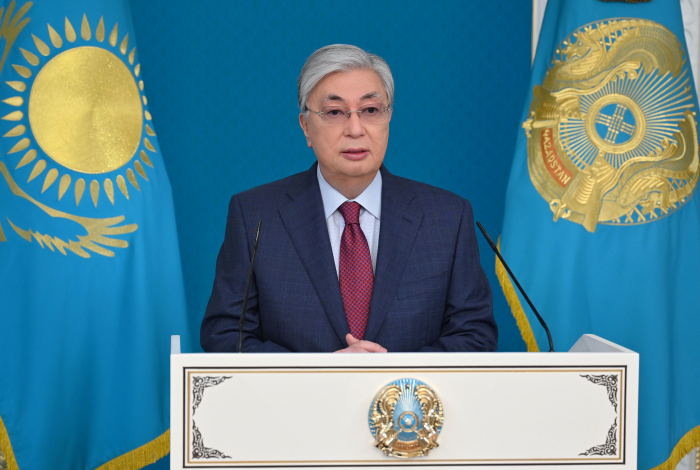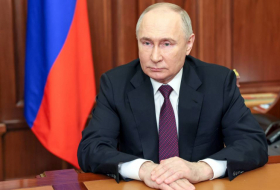By Dr Mehmood Ul Hassan Khan
President Kassym-Jomart Tokayev during his state’s address showcased more than 100 ideas and proposals covering a wide range of issues, presents a future strategy for the development of Kazakhstan’s economy in which it would play an important role in the regional expansion of the BRI in the days to come.
Interestingly, President Kassym-Jomart Tokayev in his state of the nation address rightly emphasized the strategic importance of trans-regional connectivity. At least0 “11 international transport corridors” navigate Kazakhstan, and it aims to increase the share of transport and logistics in its GDP to 9 percent within the next three years.
Historically, Kazakhstan was one of the first countries to support the BRI aligning its participation with its ambitious goal of becoming a “transport” and “logistics” hub in Eurasia.
Kazakhstan is the “biggest diversified economy” of the Central Asian region which is also the “birthplace” of BRI in 2013. Since its inception the BRI has become a win-win proposition for both the countries and their private companies alike.
Moreover, it fostered deep connections and conducted meaningful cooperation with China covering almost all sectors under the BRI framework ranging from investments, trade, infrastructure development, digitalization, agriculture, rails and special economic free zones.
The “constant” increase in bilateral trade volumes, inflows of investments, corporate agricultural cooperation and continued industrial development vividly reflects strong impacts of the BRI in the diverse sectors of Kazak economy. It seems that the BRI has been deeply “aligned”with Kazakhstan's development strategy, continuously promoting stable and far-reaching pragmatic cooperation between the two countries.
The scientific study upholds that since the announcement of the BRI many mega projects have been initiated and subsequently, carried out in Kazakhstan, benefiting both countries and the entire Central Asian region. These projects involve expanding transport and logistics capabilities, modernizing industrial, agricultural infrastructure and renewables etc.
According to the General Administration of Customs of China (2021-2022) the total volume of trade in goods between China and Kazakhstan stood at $31.17 billion in 2022, up 23.6 percent from the previous year. In 2022, the trade volume between China and Central Asian countries registered a record of over $70 billion which is indeed the blessing of the BRI.
Interestingly, China has consistently ranked as Kazakhstan's second-largest trading partner, second-largest export destination, and second-largest source of imports for many years.
Both countries have enthusiastically developed transit transportation and international land and sea multimodal transport. In this regard, the China-Europe freight trains have been operating non-stop, with over 13,000 trains passing through the “Alashankou” and “Khorgos” ports in Northwest China's Xinjiang in 2022, an increase of 8.7 percent compared to the previous year. From January to July 2023, more than 8,000 trains passed through these ports.
Even modern industries have also flourished. China and Kazakhstan have continuously created cooperation highlights in healthcare, cross-border e-commerce, digital economy, automobile manufacturing, and modern agriculture.
It is evident that the BRI has played any important role in ‘trade and investment to capacity cooperation, connectivity, modern industries, disaster management, healthcare and multiculturalism”. The all-round mutually beneficial cooperation between China and Kazakhstan has vividly reflected strong “vitality” and “resilience”, and the foundation of people-to-people friendship is becoming increasingly solid.
The “Shymkent Oil Refinery”, the “photovoltaic power plant in Almaty”, and “the Orda glass plant in Kazakhstan's Kyzylorda Region” are the few mega projects under the flagship project of BRI. These have greatly improved Kazakhstan's industrialization level and benefited the people.
It hopes the BRI in the next decade will further enhance energy cooperation in oil, natural gas, and uranium. In the clean energy sector, “wind power”, “photo-voltaics”, and “solar thermal energy” will be actively further expanded.
Moreover, cooperation in “e-commerce”, “big data”, “artificial intelligence”, and “5G” will be further flourished. In addition, infrastructure connectivity will be made to improve cross-border transportation and port handling capacity, while also promoting land and sea interconnectivity between two countries.
Moreover, “mineral extraction” and “processing”, “machinery manufacturing”, “chemicals”, “construction materials”, and “agriculture” will be further developed under the BRI in the next decade.
Furthermore cooperation in “green”, “low-carbon”, and “sustainable development” will be further strengthened creating mutually befitting propositions for both the countries.
On its part, Kazakhstan has identified the development of “green energy” as a major direction in its national energy development strategy and has set the goal of transforming into a green economy by 2050. Cooperation in green energy has become a highlight of the economic and trade cooperation between China and Kazakhstan. Chinese companies' landing of green projects in Kazakhstan such as the 100-MW Zhanatas wind farm has greatly pushed realization of this goal.
In the field of e-commerce, Kazakhstan has vigorously supported enterprises in promoting exports through cross-border e-commerce in recent years. From 2020 to 2022, a total of 220 Kazakh enterprises have joined Alibaba's international e-commerce platform, with cumulative sales of nearly US$225 million.
In concluding remarks, the BRI has become a “driving force”, an “ideal platform” for sustainable economic development and last but not least a mega projects of “trans-regional geo-economics”. It has also successfully transformed Kazakhstan’s “economic outlook” and has further enhanced its “geographical significance”.
It is suggested that “electric vehicle” would be another area of cooperation under the BRI between two sides in the next decade. Moreover, diversification of macro-economy through robust “service” and “financial sector”, “real estates”, “mining”, “blue/green hydrogen power generation”, “smart living/city”, “climate change”, “community development”, “projects of consumer goods”, “balanced rural development” and “food security” would be mutually beneficial sectors under BRI in the next ten years.
It is suggested that policy makers of Kazakhstan should focus on the continuation of the “structural reforms” to address its medium-term development challenges. It seems that desired economic growth has been significantly constrained by weak productivity over the past decade, thwarting development prospects. Average real GDP growth has declined to less than 4 percent since the 2008 banking crisis and subsequent construction bubble burst, down from 10 percent annual expansion in 2000-2007 which needs to be rectified as soon as possible.
It is “good omen” that the growth of Kazakhstan’s economy reached 5 percent in the first half of 2023, with a 4.8 percent increase in the real sector and 4.9 percent in the service sector All major industries registered positive outlook, with the highest indicators recorded by the construction sector with a 12.3 percent growth, trade 10.4 percent and information and communication 8.8 percent.
The new game changing rules of the Just Kazakhstan involve changes in the relationship between the central and regional executive powers, as well as the implementation of new tax incentive measures, regulatory laws, and investor collaboration will bring more socio-economic prosperity and connectivity under the BRI in the next decade.
Dr Mehmood Ul Hassan Khan, Executive Director: The Center for South & International Studies (CSAIS) Islamabad
Regional Expert: China, CPEC & BRI
More about:
















































